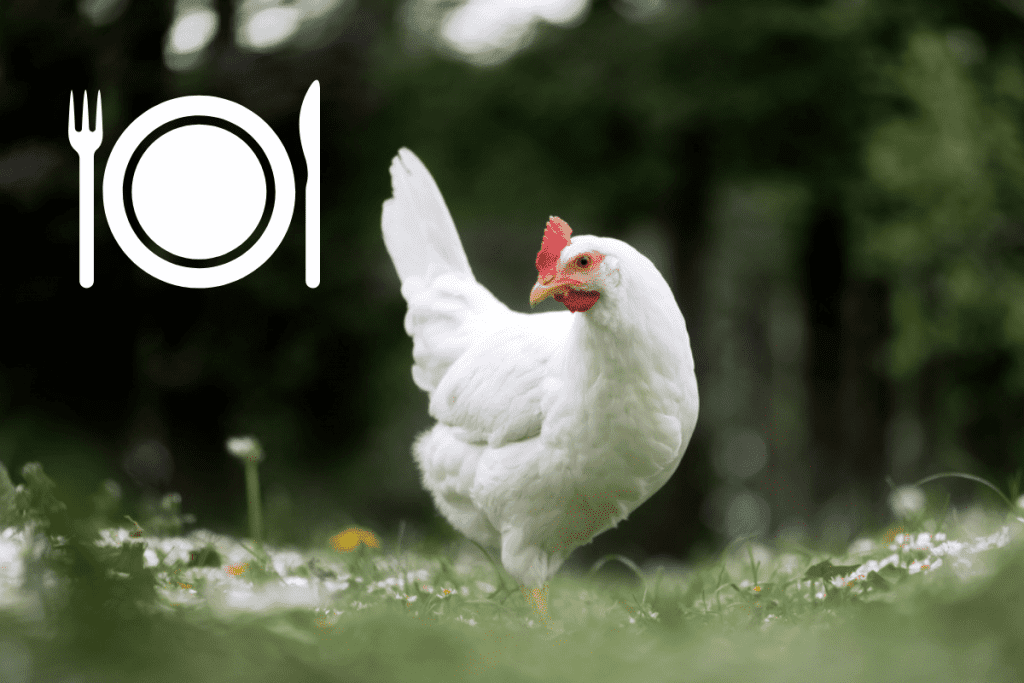“Livorno,” or Leghorn, chickens are curious birds and the clear leaders of our flock in both behavior and egg-laying.
Leghorns are the workhorses of the commercial egg-producing industry and one of the most well-known breeds of chicken.
Originating in Tuscany, Italy, they are lightweight (hens weighing in at 5 lb and roosters at 8lb), prolific layers, and are not bred for meat.
Leghorns make a good meal when cooked properly, even though they are on the smaller side. It is traditional to cook and eat the unwanted cockerels and the hens done with laying. These birds are not usually raised for meat production.
Though considered a dual-purpose breed, Leghorns are better for laying eggs than a meat breed.
Four Leghorns can supply enough chicken eggs for a family of five!
To find out more about Leghorn chickens, keep reading!

Table of Contents
ToggleAre Leghorn Chickens Good for Meat?
Leghorns are considered a dual-purpose chicken breed but are smaller birds, so they are not ideal for meat production.
They are very efficient birds at supplementing their feed when allowed to range.
Raising a batch of cockerels for butchering will not be as expensive as for some breeds.
If you butcher Leghorns for meat, expect a leaner bird and not much body fat.
Chickens dress out at about 45% of their original weight, so a 5 lb hen will give you less than 2.5 lbs of meat.
What Age Do You Butcher a Leghorn?
Since Leghorns are smaller birds, it is better to wait until their full growth before butchering them.
Generally, chickens are processed from six weeks old to three years old; Leghorn chickens will need to wait until about 12 weeks.
Historic breeds such as the Leghorn are butchered between:
- 7 to 12 weeks for broilers
- 12 to 20 weeks for fryers
- 5 to 12 months as roasters
- Over 12 months for stewing
Hens no longer laying after several years may also be processed at any age and cooked low and slow for the tenderest result.
These chickens make a flavorful and rich broth and are not tough or stringy when cooked properly.
What Is the Difference Between Broiler and Leghorn Chickens?
At first glance, broiler chickens and Leghorns look similar.
But the name “broiler chicken” are chickens specifically raised for meat.
As mentioned before, the Leghorn is generally too small for this specific purpose.
Broiler chickens are commonly the Cornish Cross – a cross between a Cornish and White Rock chicken.
Leghorns are small and slight; broilers are much larger, built like football players, and often miss feathers due to their rapid growth.
A broiler will weigh as much as an adult Leghorn hen at seven weeks.
Broilers’ legs are thick, and they rarely move too far from the feeder, whereas Leghorns explore their world thoroughly and like to roost in high-up places.
Regarding temperament, Leghorns are considered to be flighty, and broilers are considered to be docile; their main interest is eating.
Keeping Leghorns
Our white Leghorns were terrific foragers and very active chickens, even waking in the middle of the night to eat mice and unsavory bugs eating their feed.
They are a lightweight breed of chicken and can jump straight up and fly over a 10’-foot fence or wall if their wings are not clipped, so beginner chicken keepers need to be aware of this.
If possible, free-range your Leghorn chickens; they are voracious foragers and fun birds to watch.
A well-ventilated, thoughtfully designed coop reinforced with hardware cloth is optimal.
Get a secure run your chickens cannot fly out of if free-ranging isn’t an option.
Your Leghorn needs 4′ square feet of coop space, 8″ inches of roost space, and 12×12″ inch nesting boxes.
Chicken wire is not a sufficient protective material, and Leghorns are independent chickens who love to explore, so reinforce your chicken coop accordingly.
Many people say they are nervous and flighty around humans, but ours were quite forward and curious, even sampling my coffee occasionally.
Leghorn Appearance
Although the most commonly known variety of Leghorn is a white, beautiful bird, there are 12 variations in all, with each country preferring different colors for the breed.
In the United States, Leghorns are usually white, brown, black, red, or buff, are superior for egg production, and are popular with backyard chicken keepers.
Their egg color is a lovely, clean white; they lay 280-320 eggs a year after they reach about 18 to 20 weeks.
They are not good broody hens.
The mothering instinct has been bred out of them somewhere along the way.
Further reading: Do Leghorn chickens go broody?
What Are Leghorn Chickens Good For?
Leghorn chickens do well in backyard flocks, particularly in warmer climates, and are valued for their egg-laying abilities.
These are active birds and require plenty of space even though they are smaller birds.
Leghorns are good foragers, which can help save on the cost of chicken feed.
These birds do not eat as much as larger, meat-producing chickens and are healthy birds, laying eggs regularly.
A white Leghorn chicken will lay five to six eggs per week; other varieties will lay around four eggs per week.
They do not do as well in cold climates as the heavier chicken breeds due to their slighter body size.
Their light feathering and large, red floppy combs and wattles help them handle hot climates.
In cold weather, their trademark floppy comb is subject to frostbite and must be cared for.
Some Leghorns have single combs, having been specially bred in the U.S. to withstand colder climates.
Leghorns are typically not considered “lap chickens” but are quite tame with lots of human contact.
Further Reading: Leghorn chickens foods and diet
How useful was this post?
Click on a star to rate it!
We are sorry that this post was not useful for you!
Let us improve this post!
Tell us how we can improve this post?
